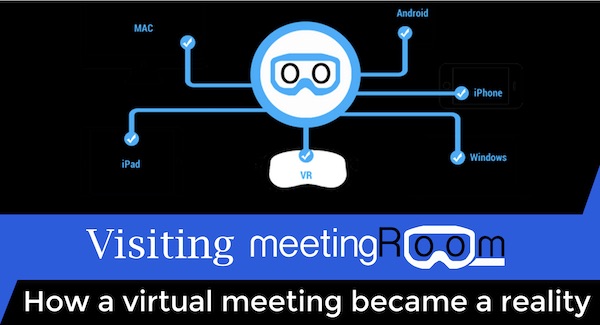I know this is a stretch for any imagination, however, an increase in the number of outbreaks of new and unknown diseases seems to be the norm today. MERS, SARS and now the new Coronavirus are on everyones mind with a good portion of worldwide reporting focusing on the number of infections and fatalities following in its footsteps. As a consequence we always see swift actions of travel restrictions in the affected areas and quarantine orders depending on where the outbreaks happen.

As a follower of the display industry, regular Display Daily readers will know that any outbreak in China will affect the total display market negatively. However, I wonder if this development may actually help the VR technology to gain traction with businesses as well as consumers? Here is what I am seeing.
The Coronavirus affects the world economy more than wars and disasters like earthquakes, etc. We have seen stock markets tumble and regain strength in a matter of days. We see companies like Google, Amazon and almost every larger corporation release some form of business travel restriction to reduce the chance of infecting their employees (as reported by CNN, NPR, Business Insider, The Verge, and others). At least in the USA this may be a question of liability, but it is also a question of employee protection reflecting competitive strength and humanitarian responsibility.

Overall we can expect a strong hit to the travel industry (a very large sector of the world economy with over $9 trillion per year) and many other businesses as well. It all depends on when the virus outbreak slows down and what the consequences are. I want to add another viewpoint to this development by looking at virtual reality as a potential solution to this issue.
Travel is a Necessity
International travel has become a necessity with the on-going centralization of production capacities and technological development. If you want to make a display panel you have to go to Asia. This allows for more competitive pricing of products as component prices are lower than ever and are still being driven down even further. We all know this and generally do not have an issue with it. When we face a crisis as we see right now, some voices say: ‘We should open a factory in XYZ to overcome these issues’. Of course, then the viral outbreak slows down and no-one is willing to invest the immense amount of money to create a technological infrastructure as it exists in China today.
So, are we stuck in this situation or can we use technology to overcome such limitations in the future?
This is where AR/VR comes in. With a two sided connection and some additional cameras each participant can see the other side’s room, factory, presentation, etc. Bandwidth poses by far not the same limitations as in the early days of video conferencing. While normal video chat rooms allow everyone to see the other side, AR/VR may go beyond this limitation by allowing each side to see additional content or whatever the other side is seeing through a camera on the headset. There are really no limits on what content can be made available.
There are already plenty of solutions available, even if some of them look more like games, based on the whole avatar concept. So far, VR will pull everyone into a virtual space that all participants share. With AR the real world could be pulled in as well. You want to take a factory tour? Just add a camera to the AR headset and off you go. With a wide angle camera solution you may even look at what interests you rather than what your guide is looking at.
 Virtual Meeting Room – credit: AboutInbound.com
Virtual Meeting Room – credit: AboutInbound.com
You think that we are far away from this solution? Take a look at Meetingroom.io for example; their solution is aiming at exactly this space. They claim to be able to improve productivity, responsiveness, and teamwork combined with a reduction in travel cost and time. That’s a lot of good things that cannot be realized with video conferencing alone. Maybe an enhanced AR/VR solution could sway more companies to give this a try?
Still not convinced that this is viable option? Take a look at the article ‘How VR and AR could be a solution to coronavirus cancellations for conferences‘ on the Forbes website by Anshel Sag. He basically argues the same concept as a solution for cancelled conferences. (
If the Coronavirus can bring business travel including conferences and exhibitions to a standstill, any alternative technical solution for these gatherings is worth looking at. While not as good as the real thing (I agree, touching the newest phone is much better than watching it on your headset) it is still better than not releasing your latest phone at all. The question you have to ask yourself, if I can’t bring people to my product release, can I bring the product release to the press via VR? Better than nothing. – NH
Editor’s Comment
I was planning to attend the ECR event in Vienna next week, but it was cancelled just a week ahead and a new date set for the summer months. That conference, being attended by many from the medical community, had intended to be a centre for discussion about Covid-19. Clearly that community has decided not to make the most of the chance to meet. Other events are talking about going virtual. However, over the years, there have been lots of attempts to make meetings and events virtual, with none really getting any momentum. I’m really not sure what needs to be done to make this a real trend. (BR)

